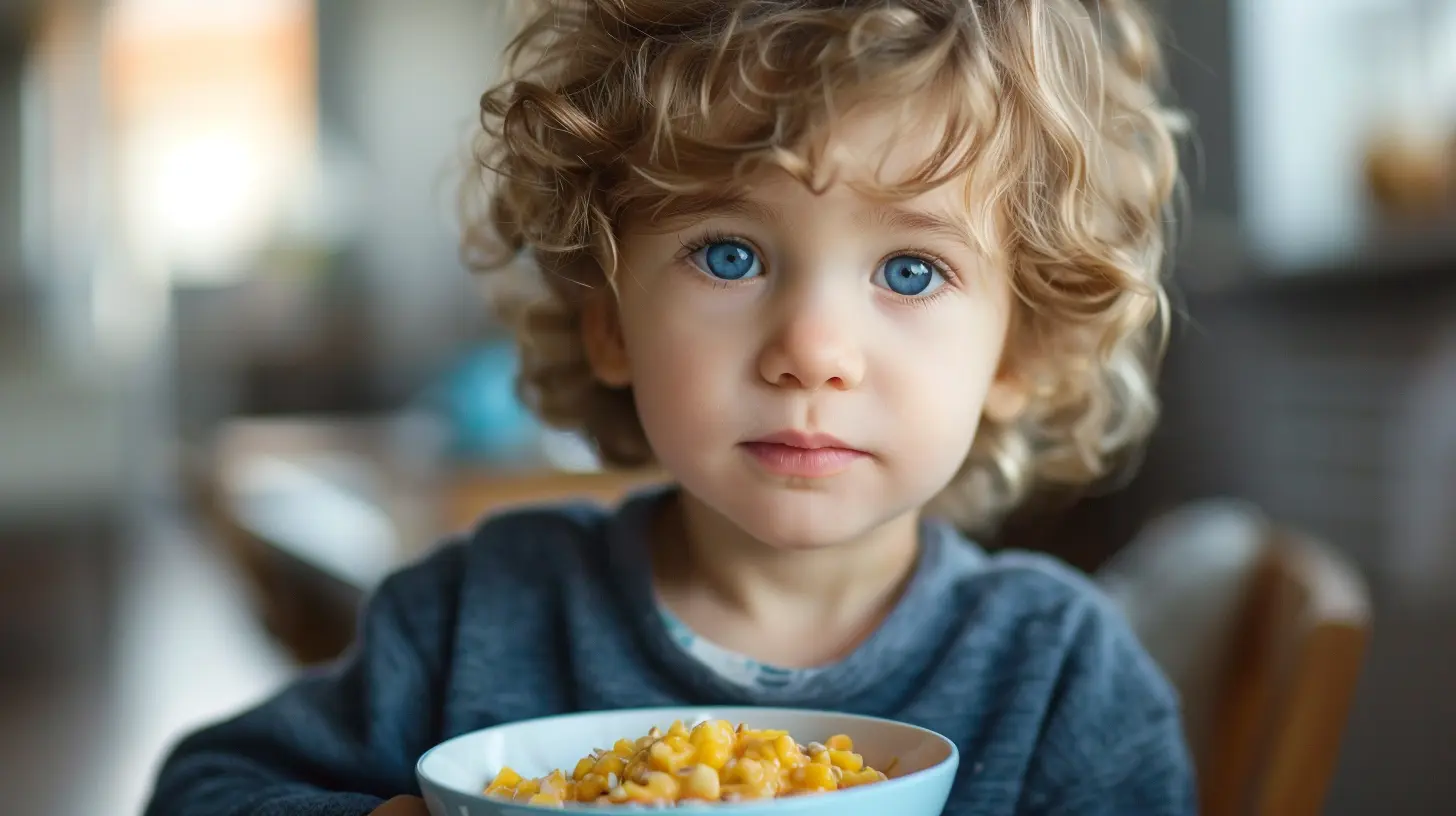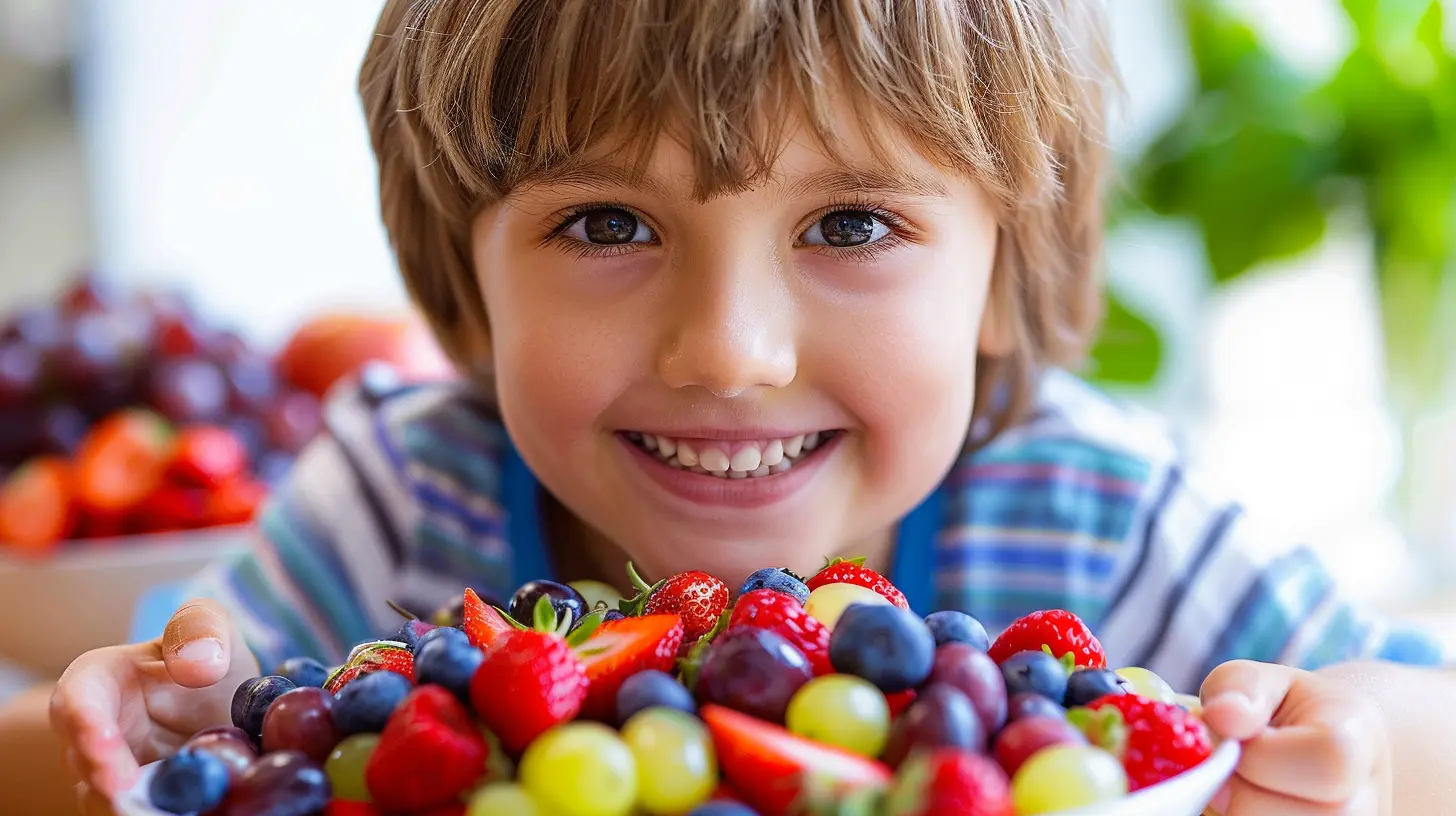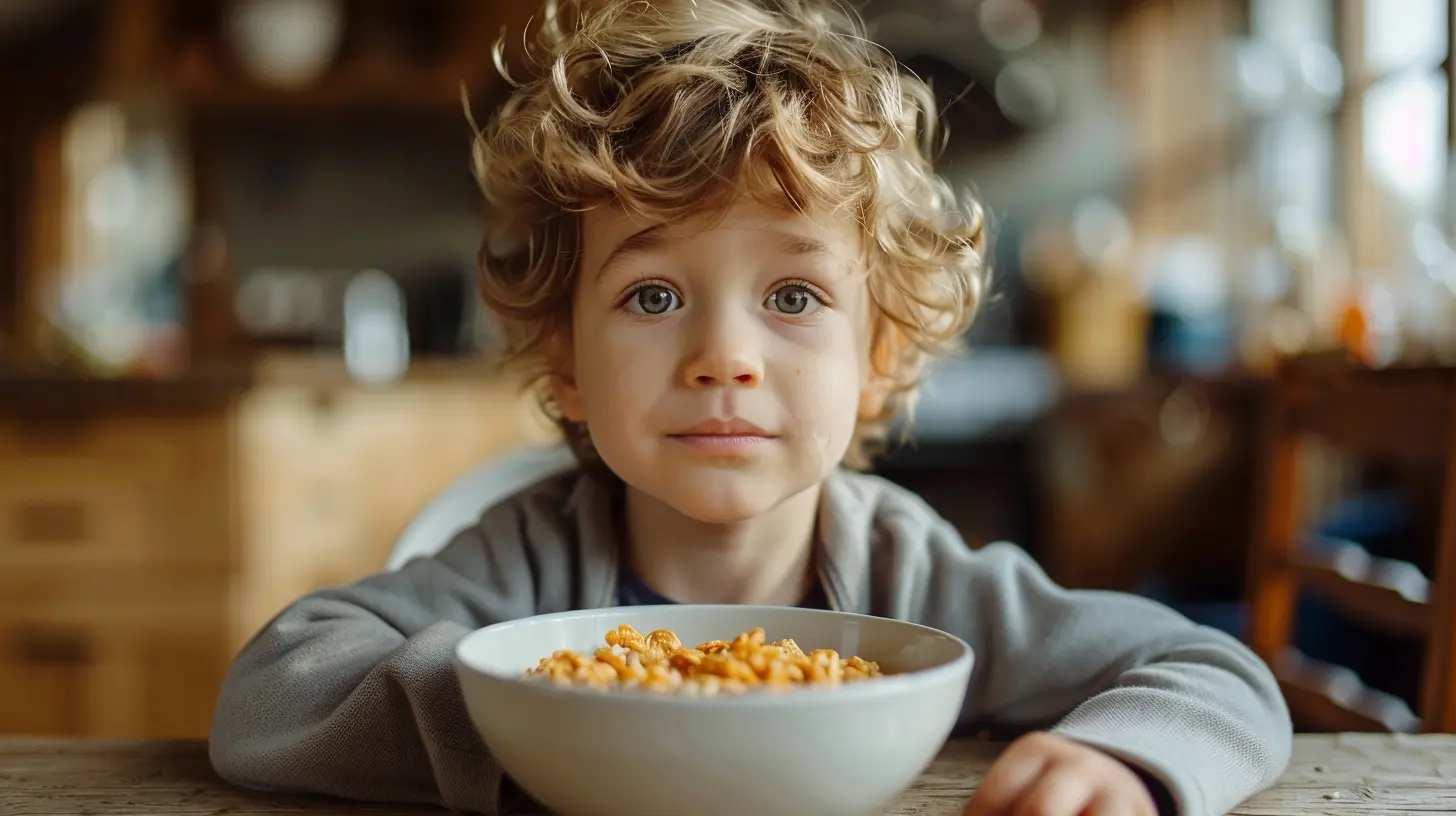The Importance of Protein in Your Child's Diet and How to Incorporate It
10 August 2025
When it comes to raising strong, energetic, and healthy kids, there’s one nutrient that parents absolutely can’t ignore—protein. It’s basically the superhero of your child’s diet. Seriously. Whether your little one is learning to crawl, sprinting across the backyard, or navigating their teenage years, protein is the fuel that keeps their body growing and thriving.
But here's the thing—many parents aren’t sure if their kids are getting enough or even the right kinds of protein. You might be wondering: “How important is protein really?” or “Do I need to give my kid protein shakes?” Don’t stress. We’re going to break it all down in a super simple, parent-to-parent way.
So, grab a cup of coffee, and let's talk about why protein matters so much and how you can easily make it part of your child’s everyday meals—without turning your kitchen into a science lab.
Why Protein Is So Important for Kids
The Building Blocks of a Growing Body
Protein isn’t just one of those buzzwords you hear at the gym. It’s a real, essential player in your child’s overall health. Think of it like the bricks and mortar of their entire body. Hair? Protein. Muscles? Protein. Skin, bones, organs? Yep, all rely on protein.During childhood (especially those growth spurts), protein plays a huge role in building and repairing tissues. It's also key in creating enzymes, hormones, and other chemicals that run all the behind-the-scenes work in the body.
Energy That Lasts
Unlike sugary snacks that spike energy and then lead to a crash (hello, 3 PM tantrums), protein offers sustained energy. It helps balance blood sugar and keeps your child feeling full. That means fewer cravings and better concentration in school or during activities.Think of protein like the slow-burning log on a fire—steady, reliable, and long-lasting.
Supports Immune Function
Did you know that certain proteins are directly involved in keeping your child's immune system strong? Antibodies, which fight off germs, are proteins. So yes, giving them enough protein could actually help reduce sick days!
How Much Protein Does Your Child Really Need?
The good news? You don’t need to measure every bite or turn into a nutritionist.Here’s a quick look at the general daily suggestions:
- Toddlers (1–3 years): ~13 grams
- Preschoolers (4–8 years): ~19 grams
- Kids (9–13 years): ~34 grams
- Teen girls (14–18 years): ~46 grams
- Teen boys (14–18 years): ~52 grams
These numbers aren’t hard to hit. A single egg has about 6 grams of protein. A cup of milk? Around 8 grams. So if your kid's eating balanced meals and snacks, they're probably doing better than you think.
Best Sources of Protein for Kids
Now let’s talk about where they should get their protein from. Here’s the scoop:Animal-Based Sources
These are high-quality, complete proteins (meaning they have all the essential amino acids).- Eggs – A breakfast MVP. Scrambled, boiled, or in a muffin cup—super versatile.
- Chicken & Turkey – Lean, easy to cook, and kid-approved when seasoned right.
- Beef – Ground beef in tacos or spaghetti? Yes, please.
- Fish – Tuna, salmon, or white fish sticks work great.
- Dairy – Milk, cheese, and yogurt are packed with protein and calcium.
Plant-Based Sources
Perfect for vegetarian families or anyone looking to switch things up.- Beans & Lentils – Budget-friendly and full of fiber too.
- Tofu & Tempeh – Great in stir-fries or sandwiches.
- Peas & Edamame – Kids love popping them out of the pod!
- Nuts & Nut Butters – Almond butter on toast is a power breakfast.
- Whole Grains – Quinoa and oats sneak in protein and are super filling.
How to Easily Add More Protein to Your Child’s Diet
Alright, here’s the good stuff—how to make sure your kid gets enough protein without turning every meal into a battle.1. Start at Breakfast
Skip the sugar-laden cereals and go for high-protein options:- Scrambled eggs with toast
- Greek yogurt with fruit and granola
- Peanut butter on whole-grain waffles
- Protein pancakes with cottage cheese in the mix
Tip: Make egg muffins over the weekend and pop them in the microwave on busy mornings.
2. Load Up Snacks with Protein
Snack attacks are real. Make them count by sneaking in protein:- String cheese + whole grain crackers
- Apple slices with almond butter
- Hummus with baby carrots
- Hard-boiled eggs
- Trail mix with nuts and seeds (just watch for added sugars)
3. Reinvent Lunch and Dinner Favorites
- Add shredded chicken or turkey to pasta and salads- Mix lentils into soups or stews
- Use quinoa instead of white rice
- Sneak beans into quesadillas or wraps
- Add cooked eggs to fried rice
The trick? Make small swaps. You don’t need to overhaul the whole meal—just add or replace one item with a protein-rich choice.
4. Don’t Forget Smoothies!
Smoothies are every busy parent's secret weapon. You can hide so much goodness in one cup.Start with a base of Greek yogurt or milk, toss in some peanut butter, a handful of spinach (they’ll never taste it), a banana, and boom—protein-packed and delicious.
Pro Tip: If your kid’s a picky eater, smoothies can be a great way to sneak in not just protein, but fruits, veggies, and healthy fats too.
What About Protein Powders for Kids?
This is a common question—do kids need protein powders?Honestly, in most cases, no. If your child is eating a balanced diet, they’re likely getting enough protein naturally. Protein powders can be handy in certain cases (like if your kid’s a super picky eater or has dietary restrictions), but it’s always smart to check with your pediatrician before adding supplements.
Too much protein can actually tax little kidneys, so more isn’t always better.
Signs Your Child May Not Be Getting Enough Protein
It’s rare, but protein deficiency can happen—especially if your child is on a very restrictive diet.Watch out for:
- Frequent fatigue or low energy
- Slow growth or poor weight gain
- Weak muscles or delayed physical development
- Brittle hair and nails
- Getting sick often
If you have any concerns, don’t guess—talk to your child's doctor or a pediatric dietitian.
Fun Ways to Encourage Protein-Rich Eating
Sometimes, it’s all about presentation and choice. Here are a few tricks:- Let them build their own “protein plate” with different finger foods
- Use cookie cutters to make sandwiches or cheese slices more fun
- Make protein-rich dips (like yogurt-based ranch) for veggies
- Try interactive meals like tacos or wraps where they choose their fillings
- Involve them in cooking—kids are more likely to eat what they help make!
Wrapping It Up
Protein isn’t just for gym buffs—it's a critical part of your child’s daily diet. From building strong muscles and supporting immunity to keeping energy levels steady throughout the day, this mighty nutrient plays more roles than a one-person play.And the best part? You don’t need fancy powders or expensive foods. With a little creativity and some simple swaps, you can power up your child’s meals in a way that’s both tasty and nutritious.
So next time you’re planning their lunch or handing out a snack, just ask yourself: “Where’s the protein?” Your kiddo’s body will thank you for it—with energy, growth, and that adorable little smile.
all images in this post were generated using AI tools
Category:
Healthy MealsAuthor:

Kelly Snow
Discussion
rate this article
1 comments
Niva Huffman
Thank you for this insightful article! Understanding protein's role in our children's diets is essential for their growth. Your practical tips make it easier for parents to ensure their kids are nourished and healthy.
August 20, 2025 at 3:23 AM

Kelly Snow
Thank you for your kind words! I'm glad you found the article helpful in supporting your children’s nutrition.


